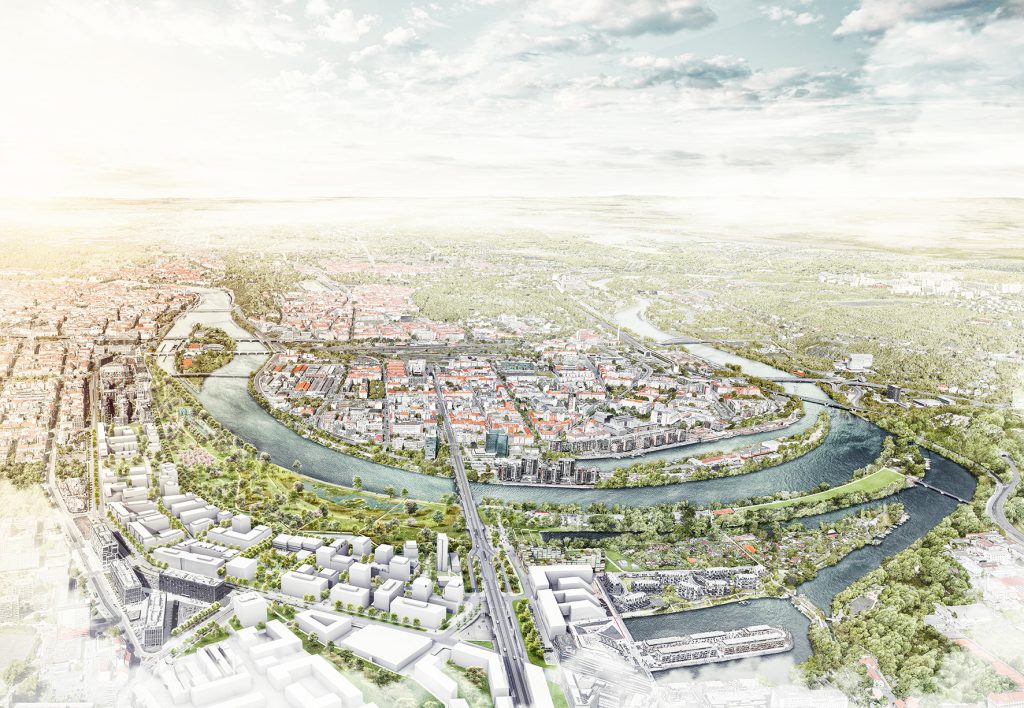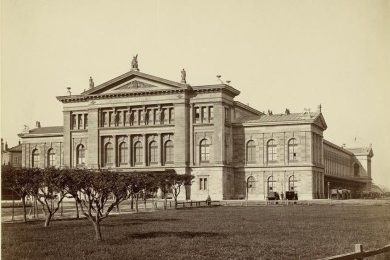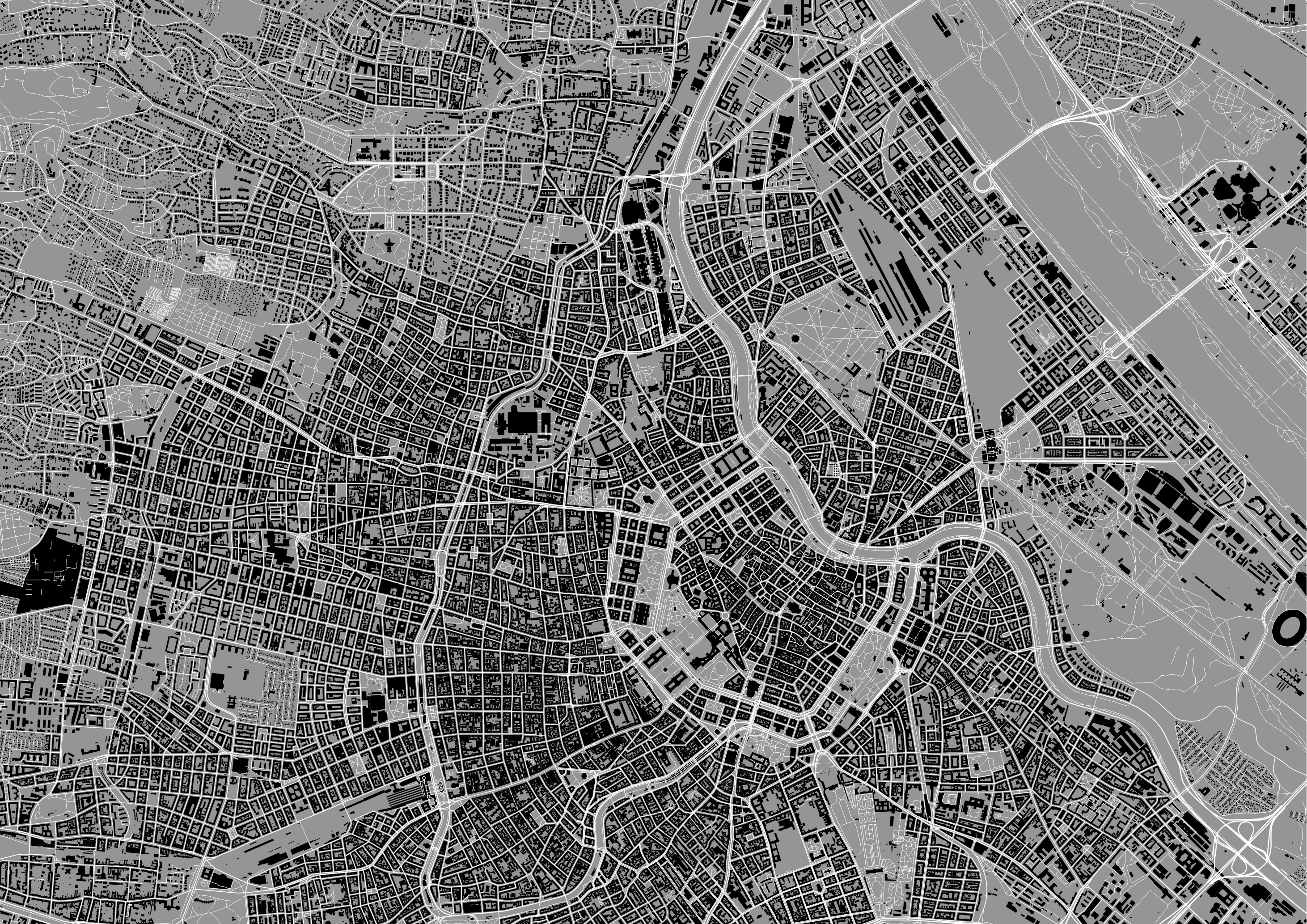
Friedrich Passler, architect at AllesWirdGut, writes in topos 109 about Vienna: a city worth living in and loving, which continues to grow, but in a healthy way.
Billboard
Skyscrapper
Halfpage
Again and again Vienna has been voted one of the most livable cities in the world. The city’s approach to urban development, which focuses mostly on urban regeneration, affordable housing and a well-developed public transport system, has successfully made the life quality of its inhabitants a priority. Vienna is growing, and in a healthy way. Yet it still has two speeds – sometimes blessedly slow and sometimes travelling in the fast lane.
It has been almost exactly 30 years to the day that I got off the train at the Südbahnhof. A direct connection from an upland village in South Tyrol at the Italian-Austrian border. The first challenge was the escalators; I had never seen anything like it before. I had arrived in Vienna and I was here to stay, as it turned out.
“Vienna is growing and is getting a lot of things right.”
The Südbahhof doesn’t exist anymore, having made space for the central station. This boasts yet more escalators and is more shopping centre than train station, in line with the global trend of commercialisation. The plot of the former station has become one of Vienna’s most important urban development sites, and so has the area of the former Nordbahnhof. The development of the Nordwestbahnhof is next in line and ideas and visions for the Westbahnhof are in discussion. Vienna is growing and is getting a lot of things right. It is growing comprehensively, not just on the outskirts but also in the centre. Through redensification in the city centre, conservation and restoration, and the use of reserves freed up by the restructuring of the traffic system. The development of the Nordbahnhof following the model and masterplan of StudioVlayStreeruwitz „Free centre – versatile edge“ seems to me especially ambitious and promising: The strong densification of outskirts bordering the growing city, for the benefit of the wild and sprawling free spaces in the centre of an area, mostly unused since World War II. And further out you can find the creation of the satellite city Seestadt Aspern, where once more the city of Vienna is doing everything right. First the underground was extended, then facilities for business and education were built. Only then were large numbers of flats added simultaneously. Of course large development projects such as these take time. Like the trees that were newly planted there life needs to grow, but the soil is well prepared.
Medium Rectangle
Halfpage
“It has a voice in privately financed projects through urban development contracts – a giving and taking.”
Vienna is a great place to live, in every phase of life. That is because in contrast to other well-situated megapolises, Vienna is affordable. The city government has a say, even playing a central role. It hands out parts of its extensive estate for subsidised social housing to the bidder with the best development concept, as opposed to aiming to maximise profits. So even with rising rents and property prices, there is no dramatic shortage of housing. It also has a voice in privately financed projects through urban development contracts – a giving and taking. As is the case everywhere, students and young creative people are moving to areas with cheaper rents, resulting in urban improvement and gentrification so that other residents have to look elsewhere. But no entire district of Vienna has been replaced as a result, instead they are more strongly mixed. It is easy to travel around Vienna without a car, paid parking is the rule in most areas of the city. In return, the city provides an excellent public transportation network with an annual travelcard costing 365 euros. Cycling is on the rise, thanks to an expansion of the cyclepath network and initiatives such as bike lanes allowing two-directional travel on one-way streets.
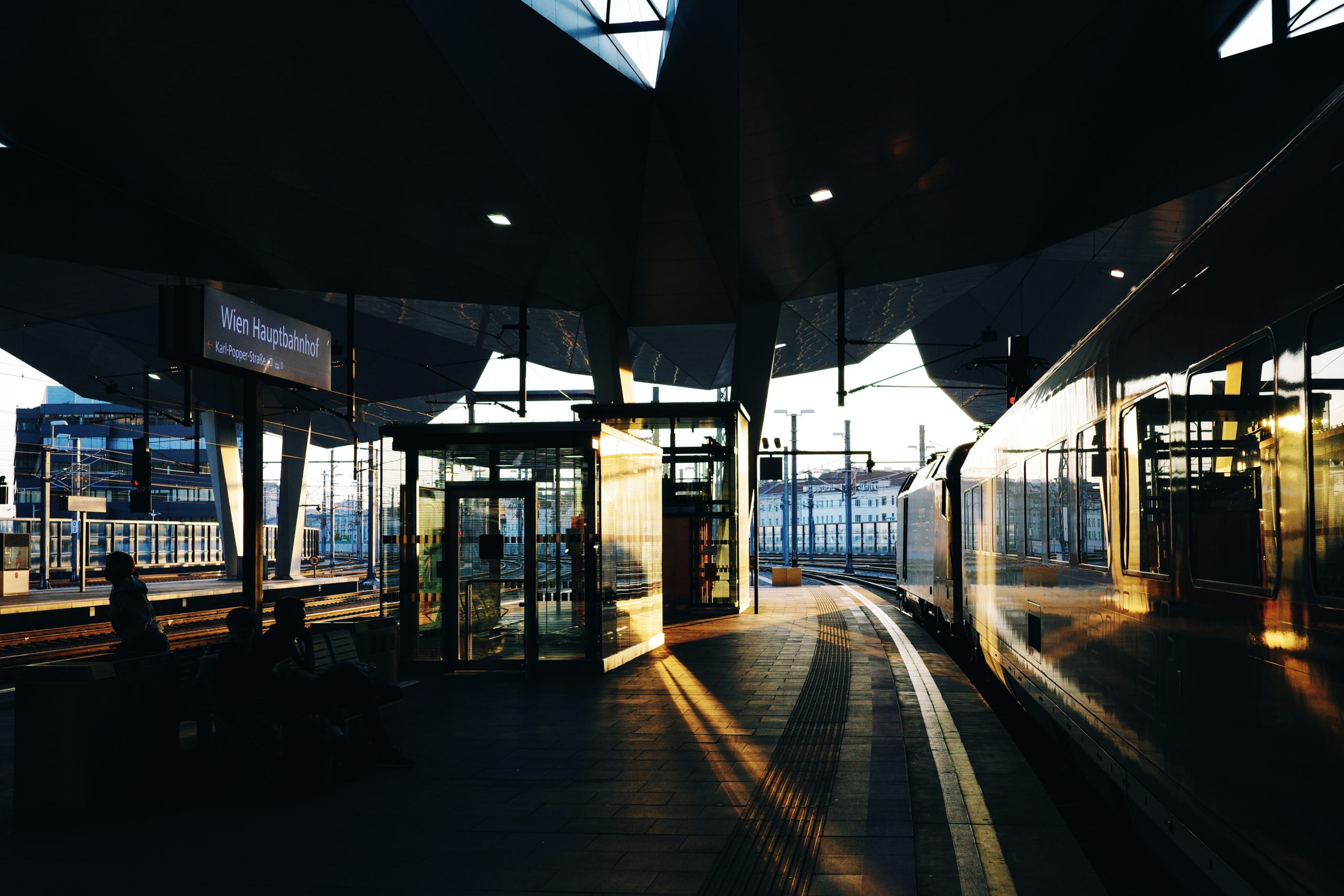
Vienna is beautiful. Worth living in and worth loving. Once it starts getting warmer, usually by the end of April, you can find me at the Alte Donau, at the freely accessible wooden boardwalks opposite the Gänsehäufel, Austria’s most visited open air swimming pool. And as soon as the standing water of the Alte Donau gets too warm, I can be in Bad Fischau within 45 minutes; a small historical spa town from imperial times with cold flowing spring water.
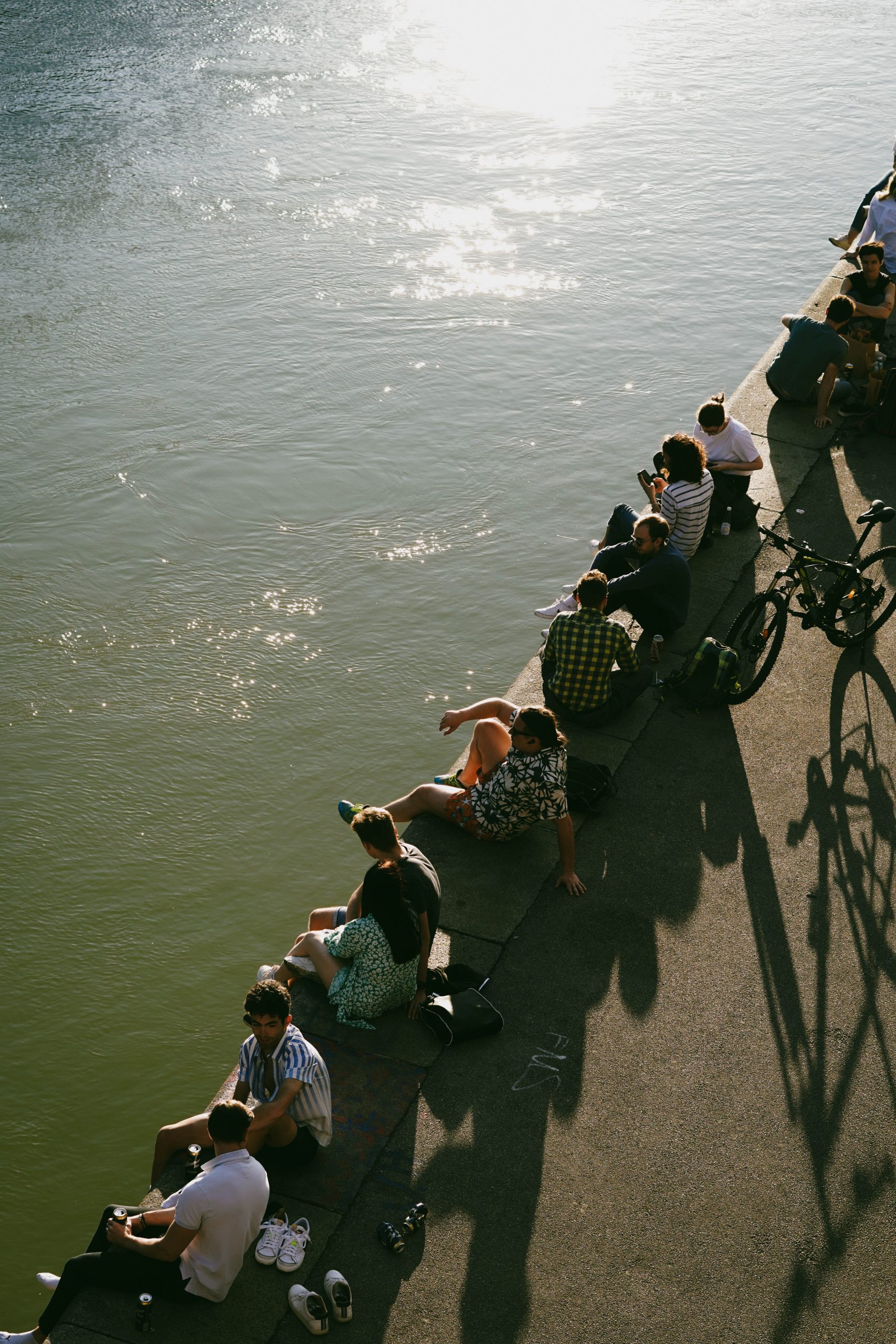
“Never static, but never hasty.”
My love for the city centre is more recent. It took a while until the mass of tourists no longer ruined my pleasure in the impressive urban beauty of the Old Town. I used to avoid the city centre and preferred to spend my evenings in the Flex, the WUK or the Arena, the Chelsea, B72 or the Rhiz; with new and wild music, deafening and exciting like life in this otherwise cosy city. In the 90s bars formerly hidden and dispersed relocated to the railway arches near the outer ring road “Gürtel”, with the logic that it is loud and dirty there anyway. One constant are the art house cinemas. The Filmcasino, the Votivkino, the Stadtkino, now in the Künstlerhaus, the Gartenbaukino. Vienna always feels to be slowly in motion. You don’t notice the continuous change during everyday life. Only if you look back you discover how much has changed in the 30 years since my arrival. And this is precisely one of the strengths of this city: never static, but never hasty. Just like life here. In constant adjustment and still always in the right place.
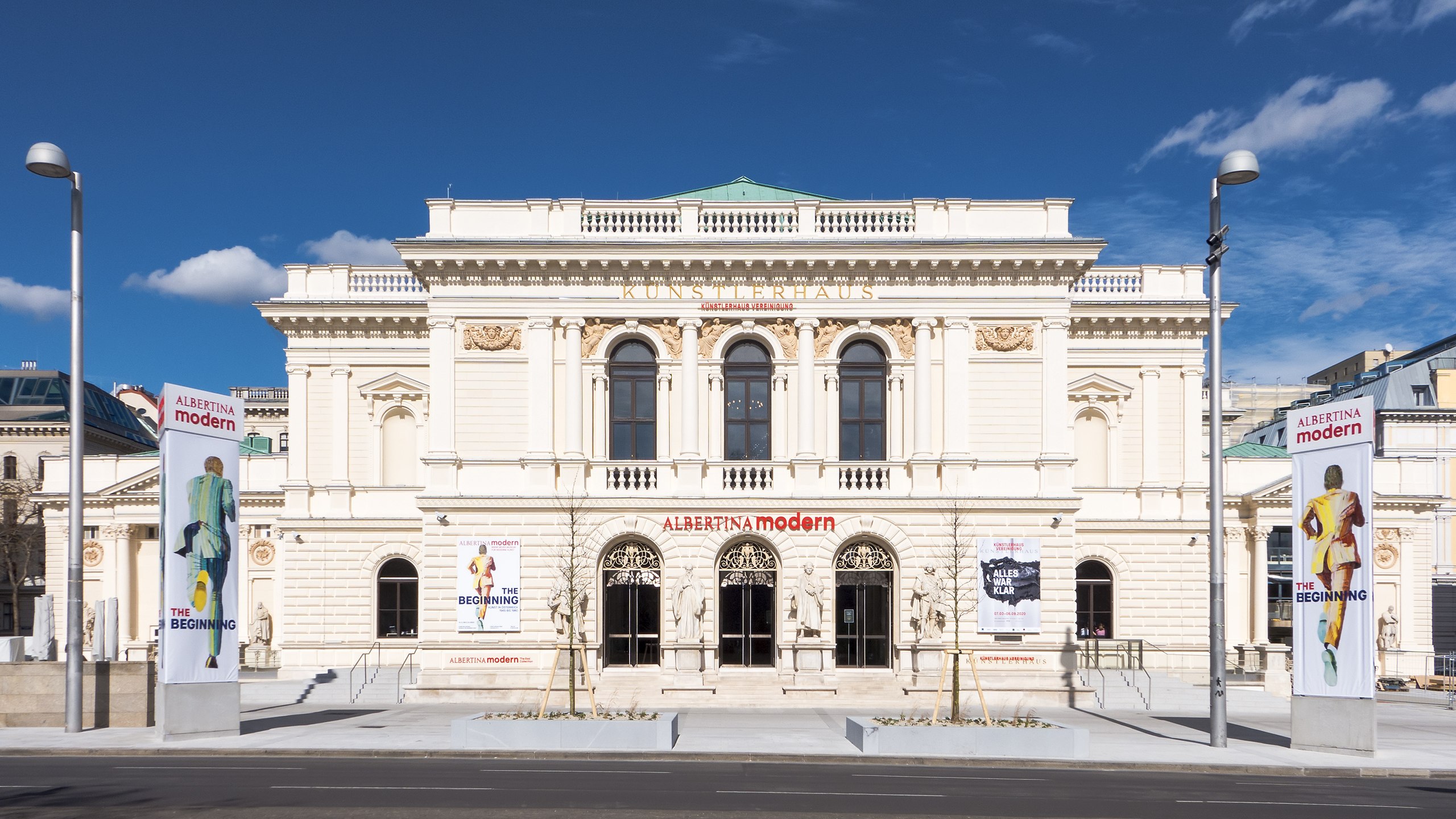
Friedrich Passler was born and raised in the Puster Valley, South Tyrol. He studied architecture at the TU Vienna as well as at McGill University, Montreal, CA. In 1999 he founded AllesWirdGut together with his fellow students Andreas Marth, Christian Waldner and Herwig Spiegl. AllesWirdGut is an internationally operating architecture and urban planning office based in Vienna and Munich.
This Metropolis Explained can be find in topos 109.
Interested in other metropolises? Find here our text about Accra, the capital city of Ghana.







